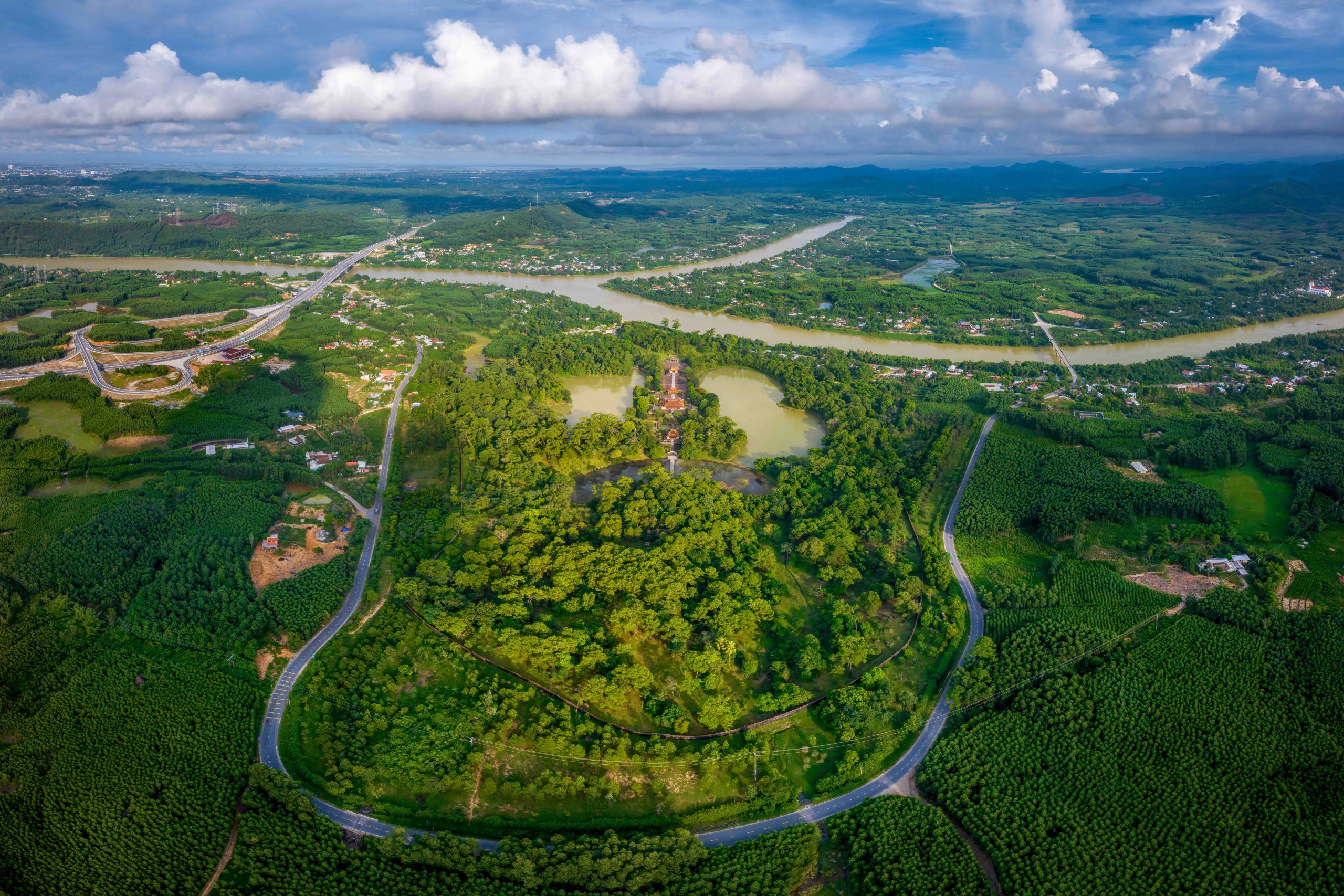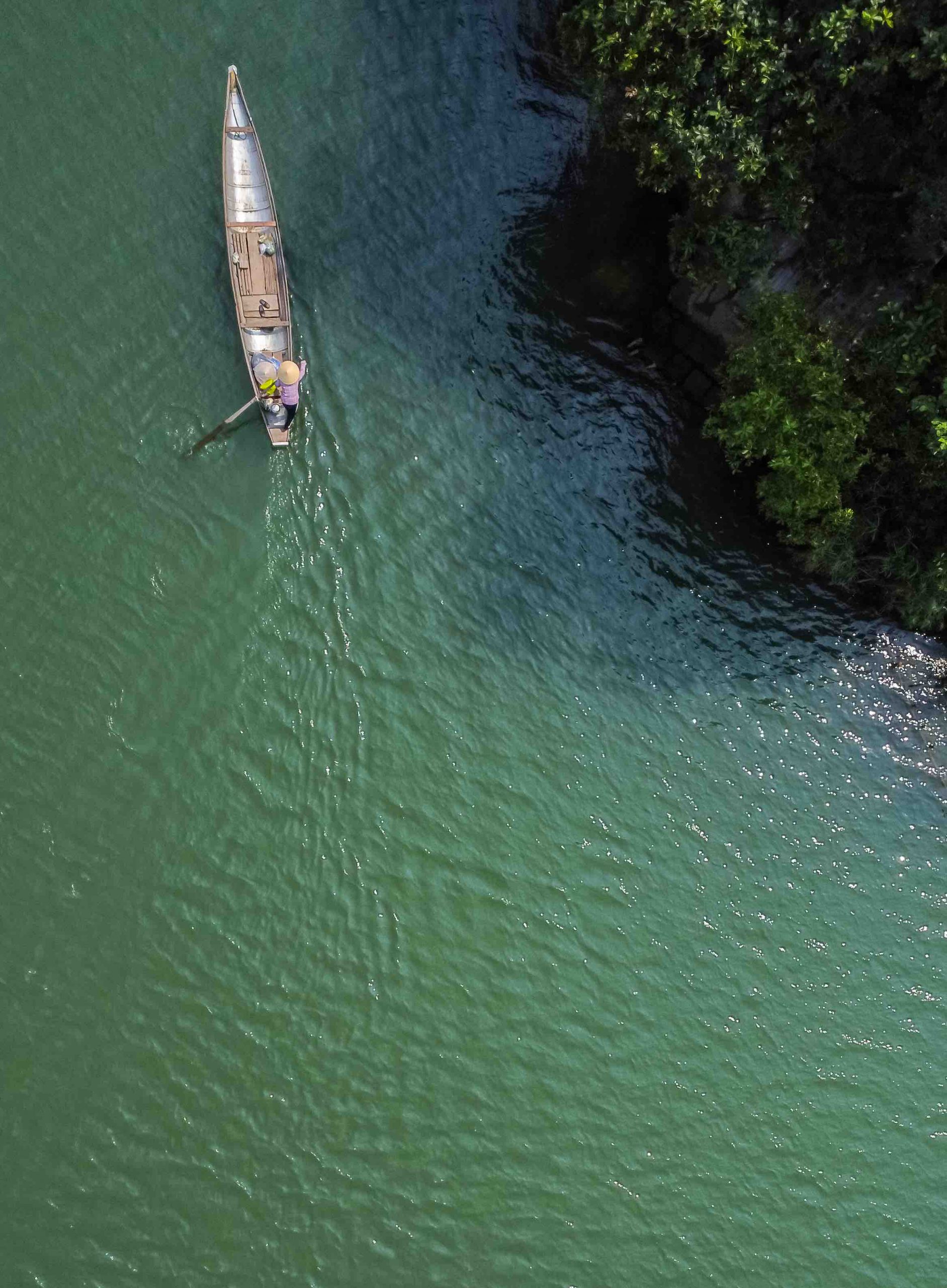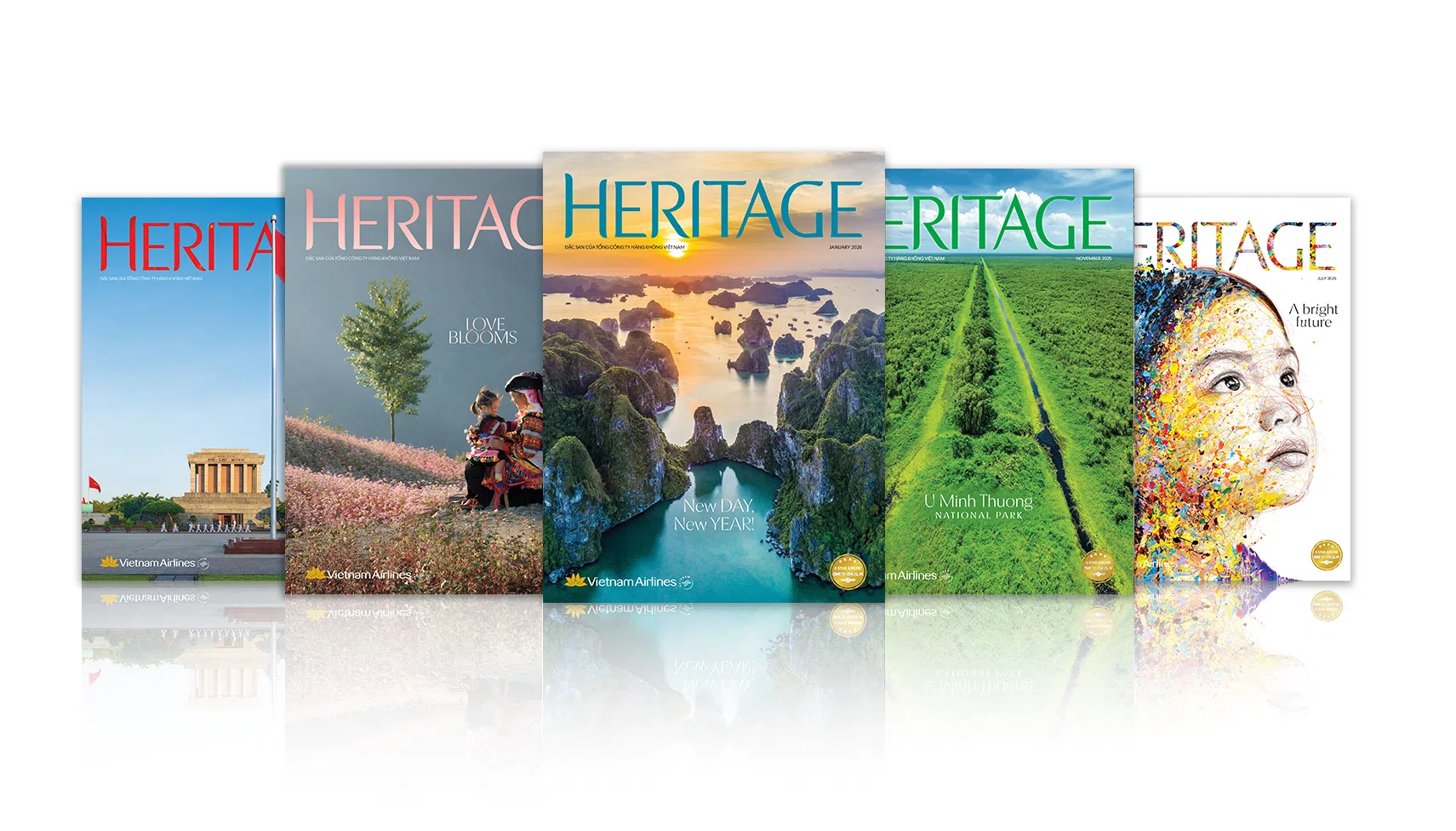Story: Yen Chi
Photos: Anh Le
Many ancient cities around the world have developed in close proximity to rivers, using them as a foundation for urban planning and growth, while weaving historical legends in the process. Hue is one such city.
Located in central Vietnam, on a narrow stretch of land bordered by the Truong Son mountain range on one side and the East Sea on the other, Hue is blessed with a stunning river: the Huong River—regarded as one of the most beautiful and poetic rivers in the world.

The Huong River only stretches some 100 kilometers, but has a vast watershed area of 2,830 square kilometers, encompassing nearly three-fifths of Thua Thien Hue province thanks to a rich network of tributaries. Originating from mountains of 900 meters height that has a steep western side, the river descends from gradual slopes on the eastern side and flows through a flat area as it approaches the sea. This distinguishes it from other rivers in central Vietnam, which often fluctuate between full and dry. The Huong River, remains abundant and flows steadily, even during the dry season. This consistency has earned it a reputation for gentle beauty, with emerald green waters that are as calm as a lake:
“The river lingers, the river does not flow,
The river flows into the heart, making Hue so profound.”
– Excerpt from the poem Tam biet (Goodbye) by Thu Bon
For countless generations, this river has been a cultural and historical symbol of Hue. Even before this region became part of Dai Viet, the Huong River was already considered sacred and associated with an ancient city of the indigenous people. The remnants of Thanh Loi Citadel, Hoa Chau Citadel, the temple dedicated to the goddess Poh Nagar at Hon Chen, the ruins of ancient towers on Ha Khe Hill, and Thien Mu Pagoda bear witness to this history. However, it wasn’t until 1636, when Lord Nguyen Phuc Lan established the capital of Dang Trong (Inner Circuit) in Kim Long on the northern bank of the Huong River and opened Thanh Ha port downstream, that the city of Hue officially came into existence. From that point on, Hue has remained one of the nation’s key cities, serving as the capital of Dang Trong (1636-1775), the capital of the Tay Son dynasty (1788-1801), and the capital of the Nguyen dynasty (1802-1945).

At the beginning of the 19th century, when Hue was chosen as the capital of unified Vietnam, the Nguyen dynasty undertook a series of waterworks projects on the Huong River and its tributaries. These efforts placed the vast imperial city in a position of “four waters converging”, a layout rich in vitality according to principles of feng shui.
With a circumference of about 10 kilometers, the Hue Citadel is surrounded by water on all sides: the Huong River in front, the Ke Van River to the west, the An Hoa River to the north, and the Dong Ba River to the east. Flowing through the heart of the citadel is the Ngu Ha River. Unlike the Huong River, the other three rivers are mainly man-made, yet their grand scale and harmonious appearance make them appear natural.
To the south of the citadel, the Nguyen dynasty excavated the Loi Nong River, extending it over 30 kilometers to connect to Ha Trung Lagoon. This ensured irrigation water for the vast rice-growing plains of Huong Thuy District, including the fields of An Cuu village. To the east, the court ordered the excavation of nearly ten kilometers of the Pho Loi River, from the Huong River to Thuan An Estuary, to alleviate flooding and provide irrigation water for many communes in Phu Vang District. The river system linking the Huong River, the citadel, and the city of Hue is not only a gift from nature but the result of human intellect and labor.
In the eyes of Nguyen-era architects, the Huong River played a key role in many aspects: it served as the main planning axis connecting the citadel with areas devoted to temples and tombs to the west and the commercial district and port areas to the east; it was the capital’s dominant feng shui element; it functioned as a natural moat protecting the southern side of the citadel; and it provided a transport route between the capital and various regions. Therefore, almost all significant Nguyen dynasty architectural works are associated with the Huong River or its tributaries. Starting in this era, the Huong River became a prominent theme in the literature and art of the land of Than Kinh (Hue Sacred Citadel).

Emperor Thieu Tri once praised the Huong River as: “Nhat phai uyen nguyen ho de thanh” (A deep stream that protects the king’s citadel). He ranked the Huong River among the 20 Scenic Spots of Than Kinh. King Tu Duc built a garden on Da Vien Island to be near the river during the summer. The great poet Nguyen Du expressed his feelings for this river in the poem Thu chi:
Hương giang nhất phiết nguyệt
Kim cổ hứa đa sầu
A piece of the moon on the Huong River
Lingering sorrow through the ages.
The poet Han Mac Tu reflected wistfully in Day thon Vi Da:
Whose boat is docked at that moonlit riverbank?
Will it bring the moon back in time tonight?
The Huong River has preserved many treasures, including a rich collection of ancient artifacts retrieved from its depths. Among these, ceramics dominate, since they were common and are durable.
Referred to as “Huong River ceramics”, this collection includes stoneware, pottery, semi-porcelain, and porcelain. Various items have been found, including vases, jars, pots, teapots, bowls, plates, dishes, footed bowls, lids, betel boxes, cauldrons, and jars. These artifacts reflect the lives of local inhabitants through various periods and reveal cultural exchanges between Hue people and those from different regions of Vietnam and abroad, including China, Japan, other Southeast Asian nations, and even Western countries.
Many dedicated people have helped to compile collections of artifacts retrieved from the Huong River into collections now housed in public and private museums in Hue, particularly the Ancient Ceramics Museum of Professor Dr. Thai Kim Lan. These artifacts add to the allure of Hue.
With a far-sighted vision, in 1835, when casting the Nine Dynastic Urns, Emperor Minh Mang ordered images of the Huong River, Pho Lợi River, and Loi Nong River to be engraved on these treasures. In May 2024, the images of these rivers became part of the Memory of the World Register for the Asia-Pacific region, honored by UNESCO.










